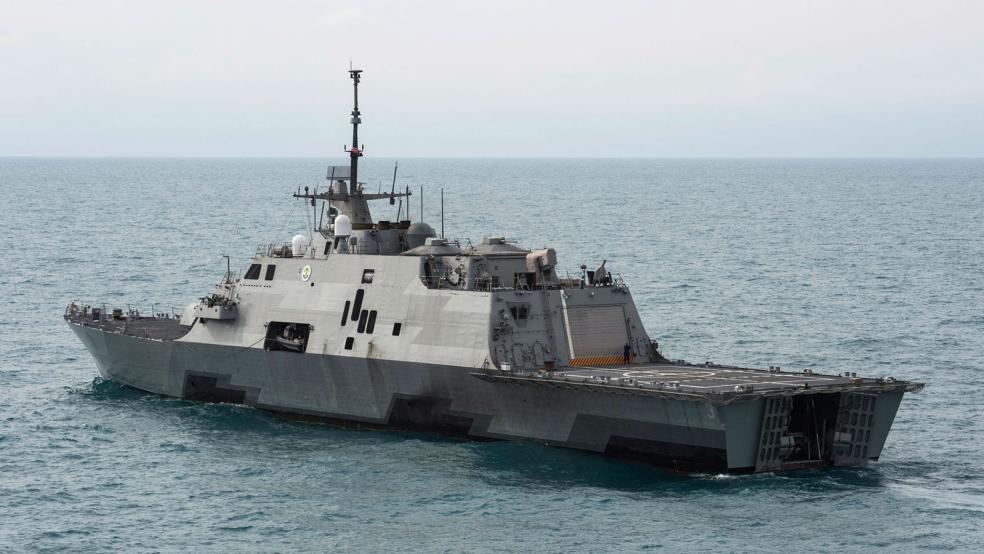Shipbuilders are profiting from mistakes they made in building U.S. Navy vessels, even though the contracts in force are supposed to protect taxpayers from picking up the cost of errors and overruns, according to a new watchdog study.
The Government Accountability Office (GAO) examined six cases involving ships the Navy purchased using fixed-price or incentive contracts in which where the government sets the requirements and price and the contractor absorbs any cost overrun. It found that in five cases the builders paid about 11 percent of the cost, while the service picked up the remaining 89 percent.
Related: Why the Navy’s New Combat Ship May Fail Against Real-World Threats
Even though the Navy uses guaranty mechanisms in the contracts, the methods “generally [have] no effect on improving cost and quality outcomes,” the study said.
In one instance, GAO found that the exterior hull paint of an amphibious ship delivered by Huntington Ingalls Industries began to peel shortly after delivery.
The Navy “determined that the shipbuilder did not adequately prepare the surface of the ship prior to applying a second coat of paint and submitted the issue as a guaranty claim,” according to the report. “The Navy docked the ship and the shipbuilder re-painted the vessel. The shipbuilder submitted invoices for the work completed and the Navy paid the shipbuilder $315,000 — even though the shipbuilder was responsible for the failure.”
Related: The Navy’s New $362 Million Ship Needs a Tow to Get Home
The GAO noted that the same amphibious ship, the Somerset, was delivered after a 32 percent cost overrun, which reduced Huntington’s profit margin by just12 percent.
Meanwhile, a destroyer built by General Dynamics needed $1.3 million in repairs. The government paid $900,000, while the defense company paid $460,000 worth of the tab.
All hope isn’t lost, though. The GAO applauded the Coast Guard for the use of warranties for its Fast Response Cutter program. When one of the vessels required over $2.1 million in repairs, the government paid $630,000, while the shipbuilder ponied up $1.5 million.
The issue of fixed-price contracts has bubbled up in recent weeks as the Air Force looks to use the mechanism to cover some of the development and early deliveries of the its budget-busting B-21 bomber program.
Related: Half a Trillion for the Pentagon? Why Defense Spending Is Only Going Higher
Senate Armed Services Committee Chairman John McCain (R-Ariz.), who has expressed displeasure over the contracting method in the past, has voiced concerns about the practice being used for a program where each plane is already expected to cost about $560 million.
He and other senators could take on the issue in the next few weeks when they sit down to write the fiscal 2017 National Defense Authorization Act. The bill serves as policy blueprint for all Defense Department policies and programs.
In the Navy’s case, the GAO suggested that the service reconfigure its contracts so builders wouldn’t profit from fixing mistakes they make. It also suggested that the Navy do a better job of tracking who is liable when screw-ups occur, the government or the contractor.
The Navy somewhat agreed with the watchdog’s recommendations but pushed back on several points, including the idea that the service isn’t adequately tracking shipbuilding mistakes.
The service generally promised to study the issues raised by the GAO, meaning observers shouldn’t hold their breath for changes in contracting any time soon.





